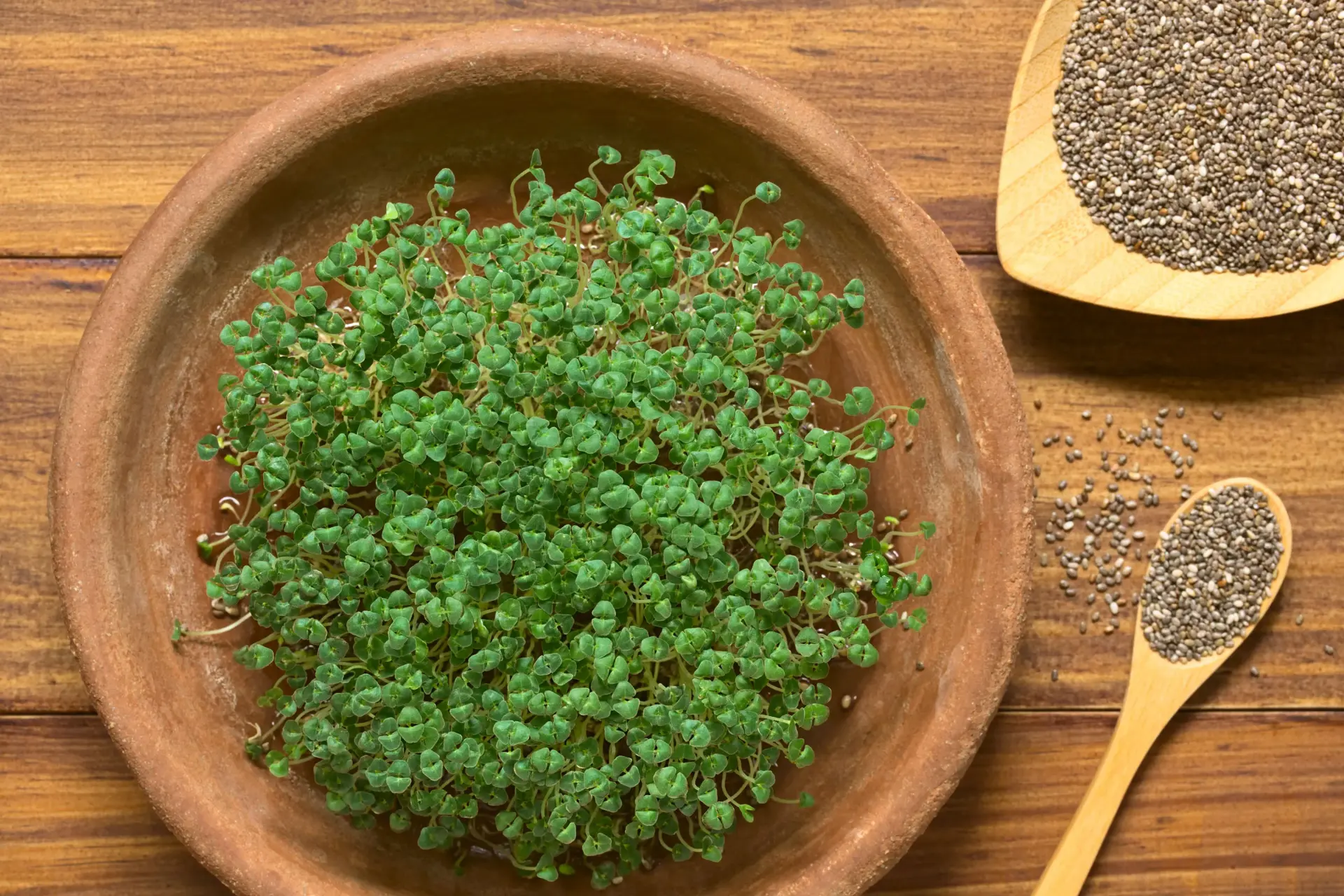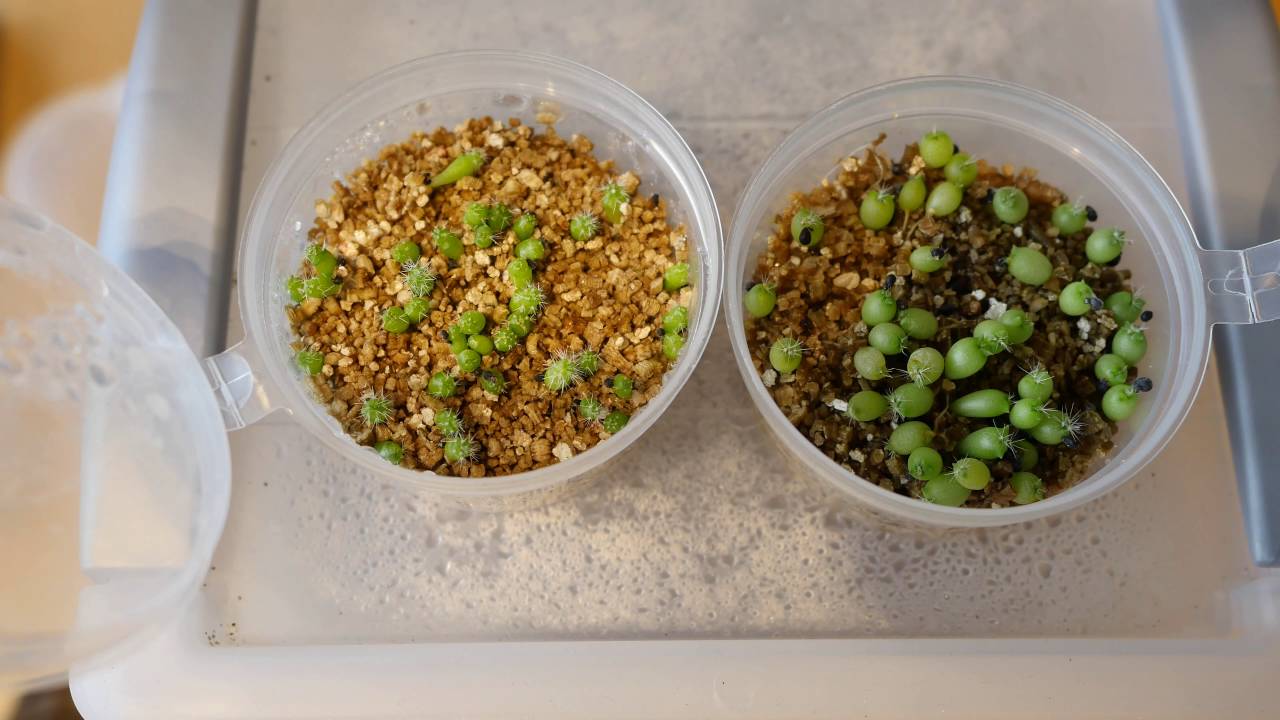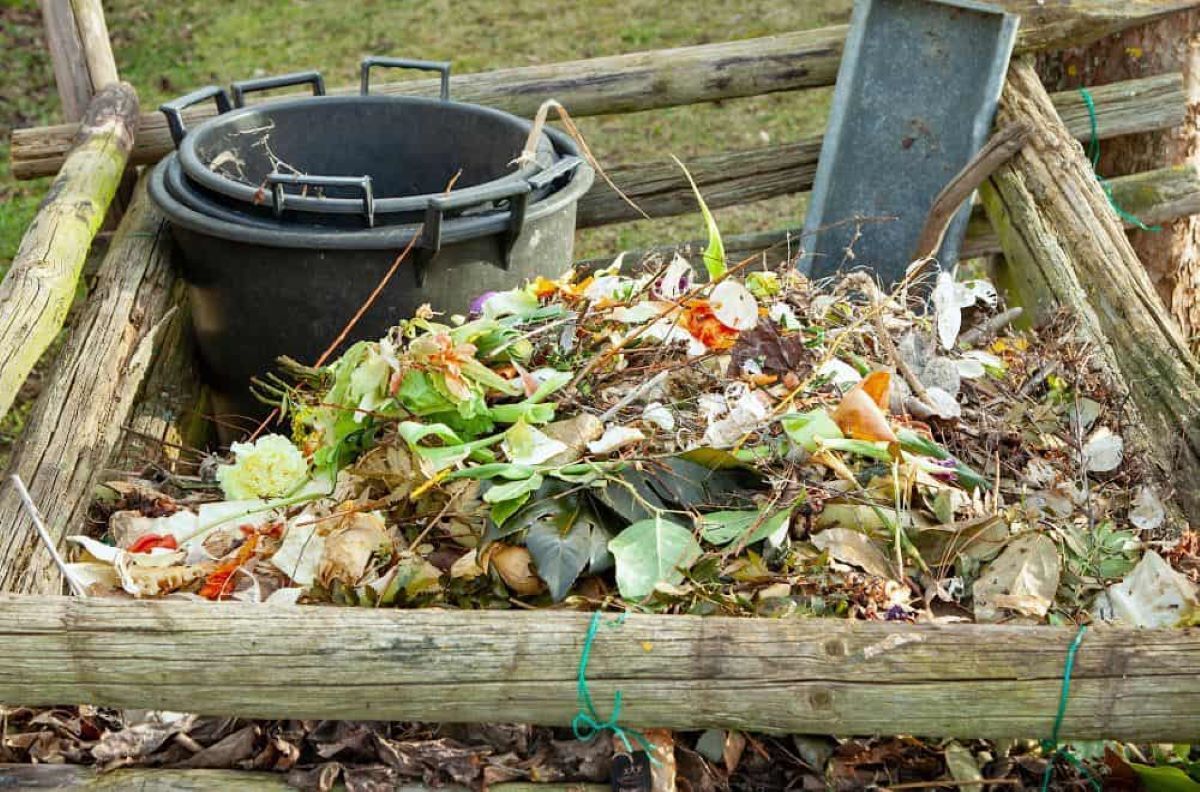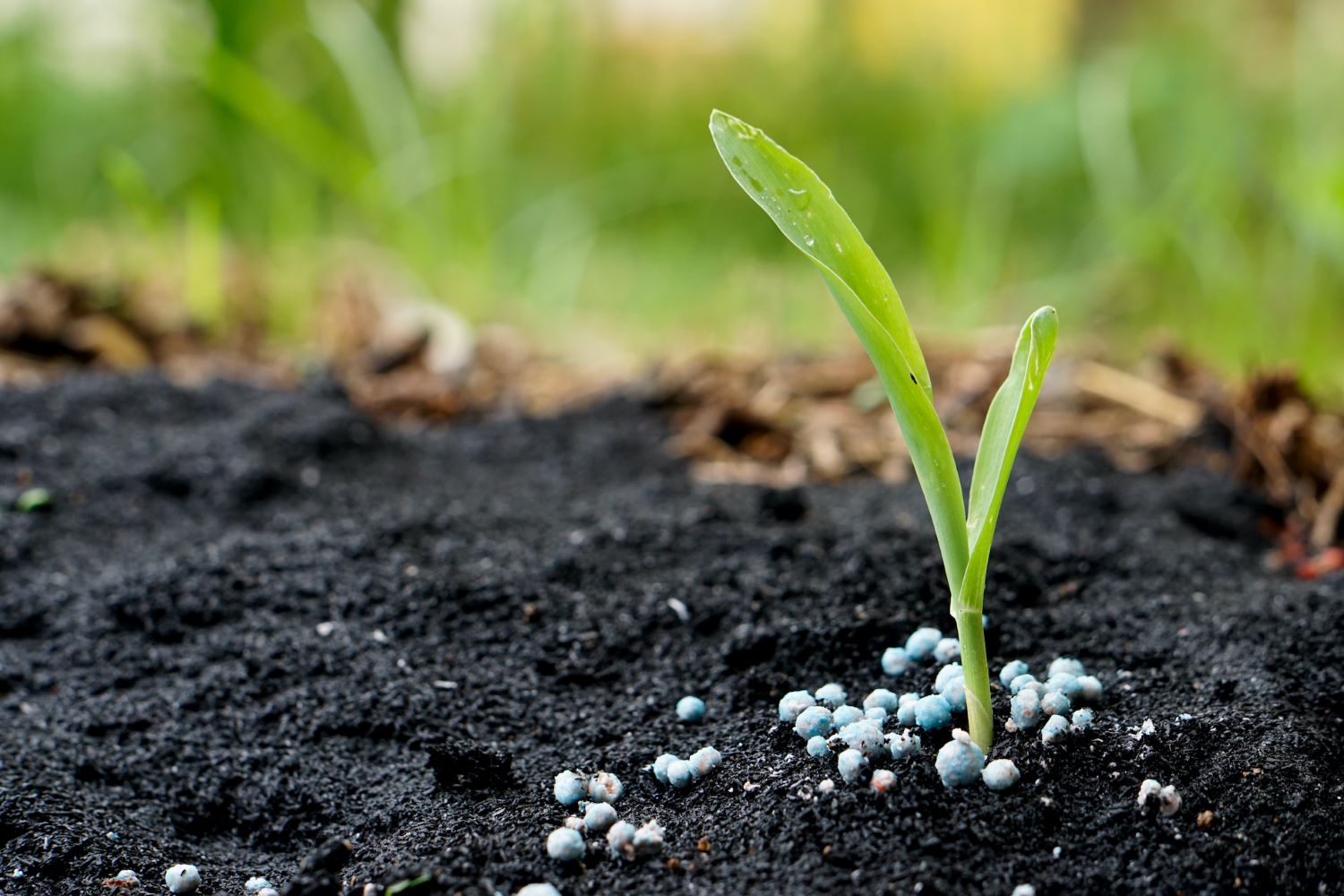Home>Types of Gardening>Ornamental Gardening>How Long Does It Take For Bonsai To Grow


Ornamental Gardening
How Long Does It Take For Bonsai To Grow
Modified: February 9, 2024
Discover how long it takes for Bonsai trees to grow in our ornamental gardening guide. Master the art of cultivating these miniature marvels and create your own tranquil oasis.
(Many of the links in this article redirect to a specific reviewed product. Your purchase of these products through affiliate links helps to generate commission for Chicagolandgardening.com, at no extra cost. Learn more)
Table of Contents
Introduction
Welcome to the world of ornamental gardening, where the art of cultivating and nurturing plants is taken to new heights. One of the most captivating and rewarding aspects of ornamental gardening is the practice of growing bonsai trees. Bonsai, originating from ancient China and widely embraced in Japanese culture, is the art of miniaturizing trees through careful pruning and training. These miniature trees exude a sense of beauty, tranquility, and contemplation, making them a perfect addition to any garden or indoor space.
Bonsai trees are more than just plants; they are living works of art that require careful attention and care. From selecting the right species to understanding the factors that influence their growth, cultivating bonsai trees is a journey that demands patience, knowledge, and dedication. In this article, we will explore the fascinating world of bonsai growth, shedding light on the average growth rates of bonsai, the factors that affect their growth, essential care and maintenance tips, techniques to promote growth, and common mistakes to avoid.
Whether you are a beginner or an experienced gardener, this comprehensive guide will provide you with the insights you need to successfully grow and maintain your bonsai trees. So, let’s dive in and discover the secrets to nurturing these enchanting miniature trees.
Factors Affecting Bonsai Growth
Growing a bonsai tree is a delicate balancing act that requires careful consideration of various factors that can influence their growth. Understanding these factors will help you create the optimal conditions for your bonsai’s development. Here are some key factors that can affect bonsai growth:
- Light: Proper lighting is crucial for the growth and health of bonsai trees. Different species have varying light requirements, but in general, most bonsai trees thrive in bright, indirect light. Too much direct sunlight can scorch the leaves, while too little light can result in weak growth and leggy branches. It is important to place your bonsai in a location that receives the right amount of light for its specific needs.
- Temperature and Humidity: Bonsai trees, like any other plants, have specific temperature and humidity requirements. Most bonsai species flourish in moderate temperatures between 60-75°F (15-24°C). Extreme temperatures can cause stress to the trees and hinder their growth. Additionally, maintaining a proper level of humidity is crucial, as low humidity can lead to dryness and wilting, while high humidity can promote fungal diseases.
- Watering: Adequate watering is essential for bonsai growth. Each species has different watering needs, and factors like temperature, humidity, and soil composition can also affect the frequency and amount of water required. Overwatering can lead to root rot, while underwatering can result in dehydration and stunted growth. It is essential to observe the moisture level of the soil and water your bonsai accordingly.
- Soil and Potting Mix: The composition and quality of the soil and potting mix play a vital role in bonsai growth. Well-draining soil is essential, as it allows proper air circulation and prevents waterlogging. Bonsai-specific potting mixes usually consist of a combination of organic matter, such as akadama or bonsai soil, and inorganic components like pumice or perlite. A good potting mix promotes healthy root development, which in turn supports overall tree growth.
- Pruning and Training: Pruning and training techniques are integral to bonsai growth and aesthetics. Regular pruning helps maintain the desired shape, control size, and stimulate new growth. Training techniques, such as wiring and bending branches, enable the bonsai tree to develop its characteristic form. Careful and artistic pruning and training can greatly enhance the beauty and grace of a bonsai tree.
By understanding and effectively managing these factors, you can create the optimum environment for your bonsai trees to thrive and flourish. Each factor contributes to the overall health and growth of your bonsai, and mastering their management is key to successful bonsai cultivation.
Average Growth Rates of Bonsai
When it comes to bonsai trees, patience truly is a virtue. Bonsai trees are known for their slow growth, which is an integral part of their charm and artistry. It is important to have realistic expectations about the growth rates of bonsai trees, as they require time and careful nurturing to achieve their unique form and aesthetic appeal.
The growth rate of a bonsai tree can be influenced by several factors, including the species, age of the tree, and environmental conditions. On average, bonsai trees grow at a rate of 2-6 inches (5-15 cm) per year. However, it is crucial to note that this growth rate can vary significantly depending on the species.
Some bonsai species are naturally slower in growth, such as the Juniper, which can take several years to develop even a few inches of growth. Other species, like the Chinese Elm or Ficus, tend to grow relatively faster and may require more frequent pruning and maintenance to maintain their desired shape.
Additionally, the age of the bonsai tree can also influence its growth rate. Young bonsai trees that are newly planted or recently trained tend to exhibit faster growth as they establish their root system and adapt to their new environment. As the tree matures, the growth rate gradually slows down.
It is important to note that bonsai trees are not meant to achieve the same size as their full-sized counterparts. They are intentionally kept small through careful pruning and root confinement, allowing them to maintain their characteristic miniature form.
While the slow growth rate of bonsai trees may require patience and dedication, it also allows for a deeper connection and appreciation for the art of bonsai. The gradual transformation of a bonsai tree over time is part of what makes it a living masterpiece.
By understanding and accepting the slow growth rate of bonsai trees, you can embrace the journey of nurturing and cultivating these miniature marvels. With proper care, attention, and time, your bonsai tree will eventually reach its full potential, creating a stunning focal point in your garden or living space.
Bonsai Species and Growth Rates
When it comes to bonsai trees, the species you choose can greatly impact the growth rate and overall experience of cultivating your bonsai. Each bonsai species has its own unique characteristics, growth habits, and growth rates. Understanding the specific traits of different bonsai species will help you make informed decisions and tailor your care accordingly.
Here are a few popular bonsai species and their typical growth rates:
- Juniper: Junipers are one of the most common bonsai species due to their hardiness and adaptability. They have a slow growth rate, with an average annual growth of 1-4 inches (2.5-10 cm). Junipers require regular pruning to maintain their compact form.
- Japanese Maple: Japanese Maple bonsai trees are known for their stunning foliage, which displays vibrant colors throughout the seasons. They have a moderate growth rate, typically growing 3-6 inches (7.5-15 cm) per year. Japanese Maples require careful pruning to maintain their desired shape and encourage branch development.
- Chinese Elm: Chinese Elm bonsai trees are favored for their tolerance to various growing conditions and their elegant, twisting trunks. They have a relatively fast growth rate compared to other species, typically growing 6-10 inches (15-25 cm) per year. Regular pruning and maintenance are necessary to prevent excessive growth and maintain the desired shape.
- Ficus: Ficus bonsai trees, also known as the “weeping fig,” are popular for their glossy leaves and unique aerial roots. They have a fast growth rate and can grow 8-12 inches (20-30 cm) or more per year. Regular pruning and root pruning are essential to keep the Ficus bonsai in check.
- Pine: Pine trees, such as the Japanese Black Pine, are often used in bonsai due to their resilience and distinctive needle-like foliage. Pines have a slower growth rate, typically growing 2-6 inches (5-15 cm) per year. They require regular pinching and pruning to maintain their compact, picturesque appearance.
It’s important to keep in mind that these growth rates are approximate averages and can vary based on the individual tree’s conditions, care, and environment. It’s always best to research the specific growth habits of the bonsai species you choose and adjust your care routine accordingly.
Regardless of the growth rate, the beauty of bonsai lies in the deliberate artistry of their cultivation. The process of shaping and training a bonsai tree requires patience, dedication, and a keen eye for artistic vision. Take the time to understand the growth habits of your chosen species and enjoy the rewarding journey of crafting your own miniature masterpiece.
Essential Care and Maintenance for Bonsai Growth
To ensure the healthy growth and longevity of your bonsai tree, it is crucial to provide proper care and maintenance. Bonsai trees have unique needs compared to their full-size counterparts, and understanding and meeting these requirements is essential. Here are some essential tips for caring for your bonsai:
- Watering: Bonsai trees require regular and adequate watering. The frequency of watering depends on several factors, such as the species, size of the pot, and environmental conditions. It is important to check the moisture level of the soil regularly and water accordingly. Avoid overwatering or letting the soil completely dry out, as both can stress the tree and hinder its growth.
- Fertilization: Bonsai trees need regular fertilization to provide the necessary nutrients for healthy growth. Use a balanced, slow-release fertilizer specifically formulated for bonsai. Follow the instructions on the fertilizer package and apply it during the growing season. Over-fertilization can damage the roots, so be mindful of using the right amount.
- Pruning and Trimming: Pruning and trimming are essential for shaping and maintaining the desired form of your bonsai tree. Regular pruning helps control the size, promote branching, and stimulate new growth. Remove any dead or unhealthy branches, as well as any excessive growth. Consider the growth habits of your specific species and prune accordingly to maintain its aesthetic appeal.
- Wiring: Wiring is a technique used to guide the branches and give them the desired shape. Use aluminum or copper wire to wrap around the branches carefully. However, be cautious not to wire too tightly, as it can cause damage to the tree. Regularly check the wires to ensure they do not dig into the bark and cut off the circulation of nutrients.
- Re-potting: Bonsai trees require occasional re-potting to prevent the root system from becoming pot-bound. The frequency of re-potting depends on the species and the rate of growth. Generally, younger bonsai trees should be re-potted every two to three years, while older trees can be re-potted every four to five years. Use a well-draining bonsai soil mix and prune the roots during re-potting to maintain a healthy root system.
- Protection from Extreme Conditions: Bonsai trees are more vulnerable to extreme temperatures and environmental conditions compared to their larger counterparts. Protect your bonsai from excessive heat, frost, and strong winds. Consider moving your bonsai indoors during extreme weather conditions or providing shade during hot summer days.
By following these essential care and maintenance practices, you can ensure the optimal growth and health of your bonsai tree. Remember, each bonsai species has its own specific care requirements, so it is important to research and understand the needs of your particular tree. With proper care, your bonsai will thrive and bring you years of joy and admiration.
Techniques to Promote Bonsai Growth
While bonsai trees are known for their slow growth, there are several techniques you can employ to promote healthy and vigorous growth. These techniques not only help your bonsai thrive but also contribute to shaping and maintaining its desired aesthetic. Here are some effective techniques to promote bonsai growth:
- Selective Pruning: Strategic pruning is a key technique to encourage growth in your bonsai. Regularly prune back vigorous branches to promote balanced growth. By removing excess foliage and redirecting the tree’s energy, you can stimulate new growth in desired areas. Pruning also allows better air circulation, reducing the risk of pests and diseases.
- Pinching: Pinching involves removing the tips of new shoots or leaves with your fingers. This technique helps stimulate branching and encourages denser foliage growth. Pinching should be done selectively, focusing on areas that require densification or shaping. It is important to perform pinching with care to avoid excessive stress on the tree.
- Wiring and Bending: Wiring and bending branches enable you to shape your bonsai tree and create an aesthetically pleasing form. By carefully wiring and bending branches, you can guide the growth in desired directions and achieve the desired silhouette. However, it is crucial to avoid leaving wires on for too long, as they can bite into the bark and hinder growth. Regularly check and adjust wires as the branches thicken and grow.
- Fertilizing: Proper fertilization is vital to ensure the availability of essential nutrients for bonsai growth. Use a balanced, slow-release bonsai fertilizer to supply the necessary nutrients over an extended period. Apply fertilizer during the growing season according to the instructions on the package. Fertilizing helps boost the tree’s overall health and enhances growth.
- Adequate Sunlight: Providing proper sunlight is crucial for the growth and development of bonsai trees. Most bonsai species thrive in bright, indirect light. Place your bonsai in a location that receives the appropriate amount of sunlight for its specific needs. Inadequate sunlight can lead to weak growth, while excessive exposure can cause leaf scorching. Adjust the positioning of your bonsai accordingly to optimize its sun exposure.
- Repotting: Regular repotting promotes healthy root growth, which in turn supports overall bonsai growth. Repotting allows you to refresh the soil, remove excessive roots, and provide the tree with fresh nutrients. It is important to repot your bonsai at the right time, considering the species and its growth rate. Repotting too frequently or at the wrong time can shock the tree and slow down growth.
Remember that each bonsai tree is unique, and the specific techniques required may vary based on the species and stage of development. It is essential to observe and understand the growth habits of your bonsai and adjust these techniques accordingly. Through careful application of these techniques, you can promote healthy growth, refine the tree’s shape, and create a visually appealing bonsai masterpiece.
Common Mistakes That Slow Bonsai Growth
While the art of bonsai requires patience and nurturing, it is not uncommon for beginners to make mistakes that inadvertently hinder the growth of their bonsai trees. Understanding and avoiding these common pitfalls will help you create the optimal conditions for your bonsai’s growth and development. Here are some common mistakes to avoid:
- Overwatering: Overwatering is one of the most common mistakes made by bonsai enthusiasts. Excessive watering leads to waterlogged soil, suffocating the roots and hindering nutrient absorption. It is important to only water when the soil begins to dry out and to ensure proper drainage to prevent water accumulation.
- Underwatering: On the flip side, underwatering can also impede bonsai growth. Failing to provide adequate water can cause dehydration and stress the tree. Carefully monitor the moisture levels and adjust your watering routine accordingly to prevent drought stress.
- Poor Soil Drainage: Bonsai trees require well-draining soil to avoid waterlogging and root rot. Using the wrong soil mixture or improper pot drainage can lead to stagnant water, suffocating the roots and inhibiting growth. Ensure your bonsai is planted in a well-draining soil mix specifically designed for bonsai cultivation.
- Insufficient Light: Bonsai trees need an appropriate amount of light to carry out their photosynthesis process and support healthy growth. Placing your bonsai in a location with inadequate light can result in weak growth, elongated branches, and pale foliage. Ensure your bonsai receives the right amount of indirect sunlight for its specific species.
- Inadequate Fertilization: Bonsai trees require regular fertilization to receive essential nutrients for growth. Neglecting to fertilize or using the wrong type and amount of fertilizer can lead to nutrient deficiencies, weak growth, and poor overall health. Follow a proper fertilization schedule and use a balanced bonsai-specific fertilizer to provide the necessary nutrients.
- Improper Pruning: Pruning is a vital technique for maintaining bonsai shape and stimulating new growth. However, improper pruning practices can have detrimental effects. Pruning too aggressively or at the wrong time can stress the tree and slow down growth. Ensure you understand the specific pruning requirements for your bonsai species and follow best practices.
- Improper Repotting: Repotting is necessary to refresh the soil, prevent root-binding, and promote healthy root development. However, repotting at the wrong time or too frequently can shock the tree and hinder growth. Plan your repotting carefully, taking into consideration the specific needs of your bonsai species and its growth rate.
By avoiding these common mistakes and staying attentive to the needs of your bonsai tree, you can create an environment conducive to its growth and vitality. Remember that bonsai cultivation is a learning process, and with patience and practice, you will develop the skills to care for your bonsai effectively.
Conclusion
Cultivating a bonsai tree is a journey that requires patience, knowledge, and a deep appreciation for the art of ornamental gardening. Throughout this article, we have explored various aspects of bonsai growth, including the factors that influence it, the average growth rates of different bonsai species, essential care and maintenance practices, techniques for promoting growth, and common mistakes to avoid.
From understanding the importance of light, temperature, and watering to the artistry of pruning, training, and shaping, managing these factors is crucial for fostering healthy bonsai growth. Each bonsai species has its own unique growth habits, and it is imperative to understand and cater to their specific needs.
While bonsai trees are known for their slow growth, their deliberate cultivation allows for a deep connection and appreciation for the intricate beauty they possess. By employing proper care and maintenance techniques such as pruning, fertilizing, and repotting, you can promote healthy growth and shape your bonsai into a living masterpiece.
Through regular observation, experimentation, and a willingness to learn from both successes and failures, you can embark on a fulfilling journey of mastering the art of bonsai. With time, dedication, and the application of the techniques discussed in this article, you can watch your bonsai tree flourish and transform into a captivating symbol of natural beauty and tranquility.
So, embrace the art of ornamental gardening, explore the enchanting world of bonsai, and let your creativity and love for nature guide you as you cultivate your own miniature masterpiece.






